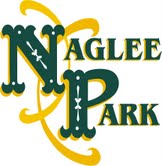Back in 2006 the City of San Jose, in conjunction with the 13th Street NAC and others, commissioned a substantial overview study of the many interesting neighborhoods north of Santa Clara Street.
That area is known to local historians as the Second Ward, since it neatly covers the geography of San Jose’s early Fire District with the same name. Back in the very early days of the City (1850), San Jose was divided into four quarters or Wards. The intersection of the four quarters was at the corners of Market and Santa Clara Streets. In those days the City Limits were Hedding Street on one side of town and Keyes on the other. The Guadalupe River and Coyote Creek were the other City limits.
Second Ward covers all of the area up to Coyote Creek. Over the years, the neighborhoods of the Second Ward were home to a majority of San Jose’s working populations. These neighborhoods were the jumping off place for most of our early settlers, many who left their marks on the area.
Second Ward has a unique land-use feature, one not found in San Jose’s suburban areas. The neighborhoods are home to the corner grocery – sometimes known as a bodega. They are important local businesses.
In the twenty years since the initial study (2006) was completed, the City has moved slowly to implement some of the recommendations. Perhaps the renovation of Japantown and the improved housing opportunities in that area best demonstrate that some progress has been made.
Backesto Park was created in 1920. Historian Clyde Arbuckle comments that at the time, Backesto was the largest park created in a residential neighborhood. The land for the park was purchased using a $30,000 bequest by the widow of physician Dr. John P. Backesto (1831-1890). He did not live in the immediate area; his home and office were on First Street.
The park covers twelve acres and was acquired from John Quincy Adams Ballou (1830-1929), a pioneer orchardist who specialized in growing and marketing the Pellier prune. It was Ballou who is credited with first shipping dried prunes to Eastern markets, beginning in 1867.
Many people mispronounce the name Backesto. He was born John Pierre Backenstohs, but he officially changed the spelling to make it easier for his patients. It is pronounced BACK a stow.
Backesto was born in Pennsylvania and took medical training in Indiana. He was licensed in California as an “eclectic” physician. He moved to San Jose some time between 1867 and 1870, after the Civil War, with his wife and his brother. He was married at age 24 to Julia Conwell, who died four years later. He then married her younger sister, Anna. There were no children from either marriage.
According to Dr. Backesto’s business advertising, his specialty was “nasal catarrh” which we would describe today as allergies or sinus infections. He includes bronchitis and consumption, a deadly condition in the 1880s. Today we know the disease as tuberculosis. Historian Pat Loomis notes that Backesto moved to San Jose for his wife’s health.
The creation of Backesto Park encouraged development of the properties surrounding the immediate area. The park was immensely popular and became a center for many activities and various City-wide sports competitions including tennis and baseball.
Recent improvements include the restoration of the fountain that marks the park dedication in 1922. This monument includes handmade tiles by notable California artist Albert Solon and features a drinking fountain for dogs as well as their owners.
Backesto Park became the model for other recreational areas as the City of San Jose developed. It is a unique community resource.


Leave a Reply